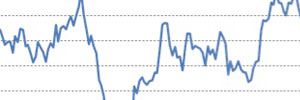 Construction output has dropped to its lowest rate of growth in over a year according to the latest Construction PMI from Markit and the Chartered Institute of Procurement and Supply (CIPS).
Construction output has dropped to its lowest rate of growth in over a year according to the latest Construction PMI from Markit and the Chartered Institute of Procurement and Supply (CIPS).
Despite reports from construction companies of strong expansion in business activity over November, the seasonally adjusted Construction PMI fell to 59.4 from October’s 61.4. While this marks the 19th month that the index has remained above the no-change threshold of 50.0, it is also the lowest reading since October 2013 and continues the industry’s decline in output.
All three broad areas of construction saw growth ease over November, led by a marked slowing in civil engineering, which saw the weakest level of activity since July 2013. House-building remained the strongest sector of construction, but has continued to see expansion reduce alongside the commercial sector.
Tim Moore, senior economist at Markit and author of the Markit / CIPS Construction PMI, said: “The construction sector remains a strong growth engine within the UK economy, but momentum has undoubtedly cooled since the summer. November’s survey highlights that housing, commercial and civil engineering activity all expanded at the slowest rates for over a year. A less favourable overall economic newsflow was cited as the key factor dampening otherwise buoyant demand patterns across the UK construction sector.
The reduced scale of expansion in construction was mirrored by that of new business volumes, which eased to the weakest level since June 2013. Reports from survey respondents suggested that strong competition for new work was responsible, in addition to greater uncertainty about the economic outlook weighing on client confidence.
Despite these continued declines in growth, the latest survey pointed to strong job creation across the construction sector, with the pace of employment growth increasing from the previous month. This reflects the optimistic views of many construction firms that expect improving underlying demand, strong pipelines of residential building projects and a general rise in new invitations to tender across the UK regions.
Meanwhile, the recent period of increased workloads has continued to contribute to a solid rise in sub-contractor usage in November. The latest data has also signalled the fastest rise in sub-contractor charges since the survey began in April 1997.”
David Noble, group chief executive officer at CIPS, said: “The sector continues to enjoy strong recovery and higher levels of activity, even if the rate of expansion has slowed a little compared to recent months.
“The one dark spot on the horizon is the danger of prolonged skill shortages across the construction sector. As sub-contractors are currently in high demand and becoming increasingly costly, the recruitment difficulties experienced by many firms in the sector may need to be addressed sooner rather than later; as the sector has some catching up to do to develop more available skilled labour.”




